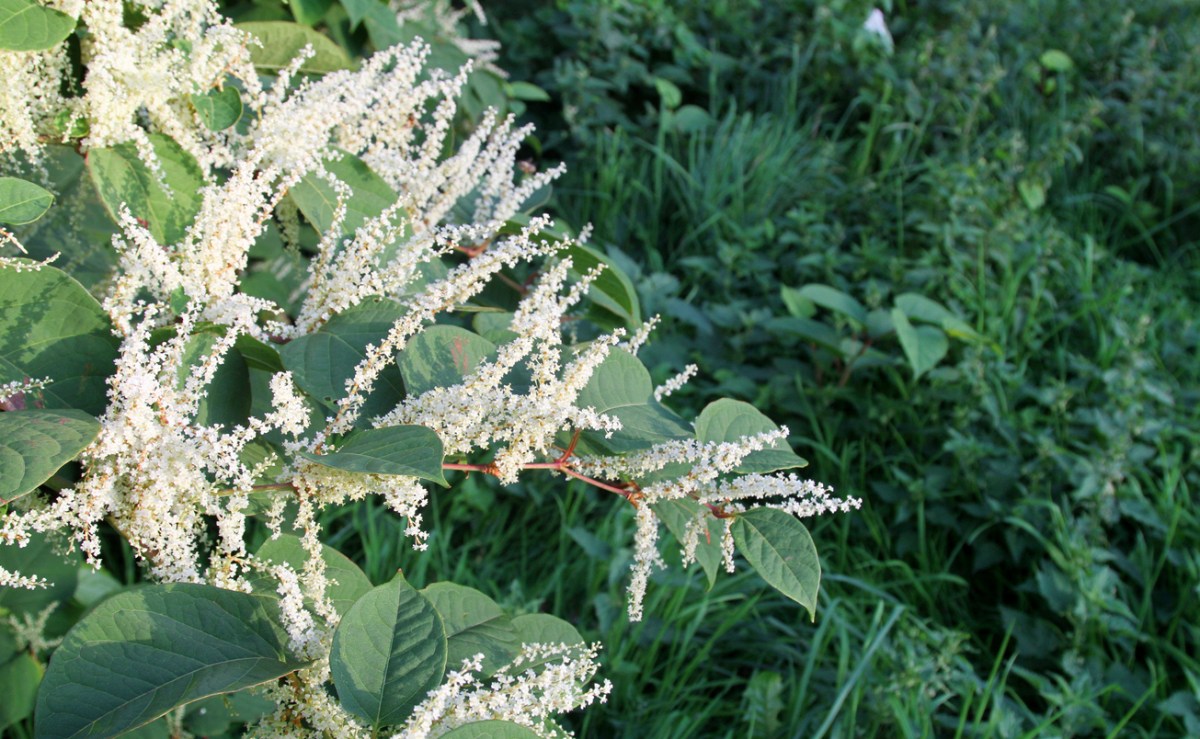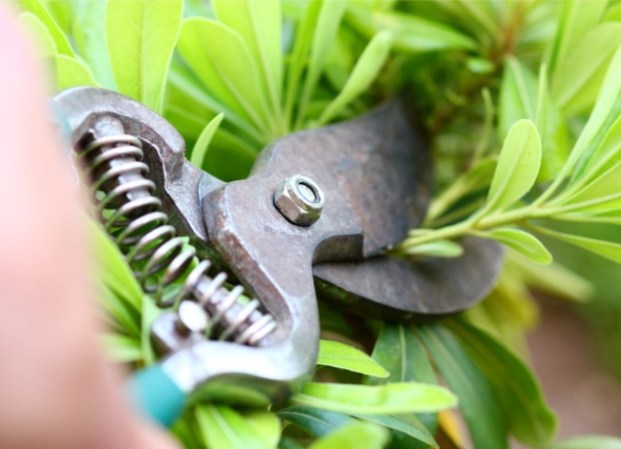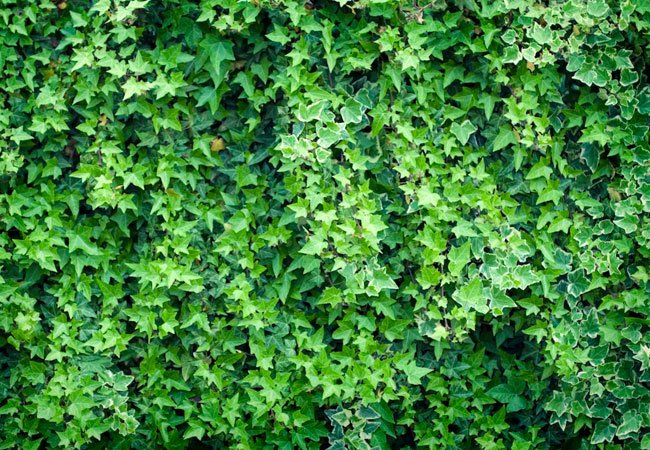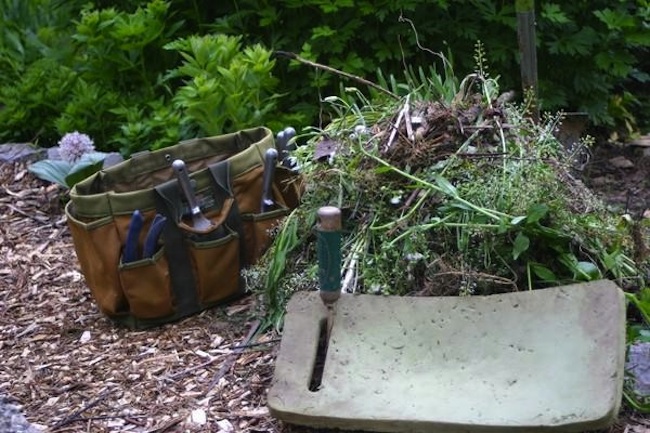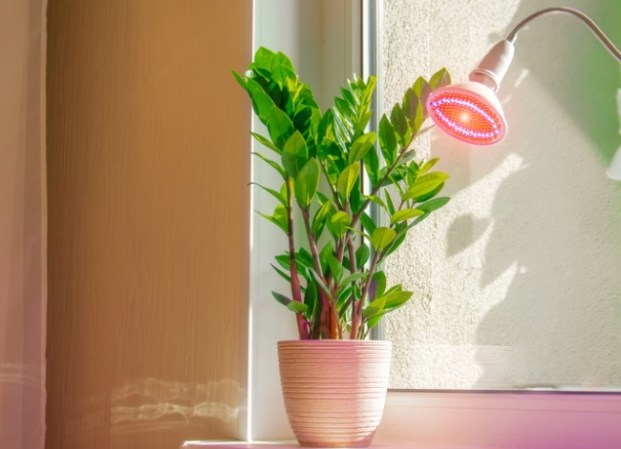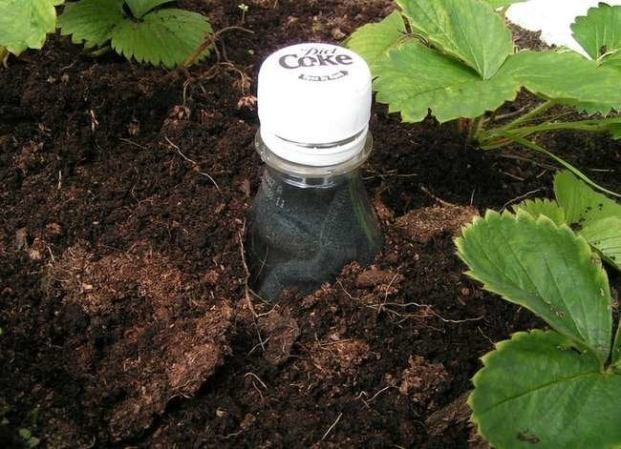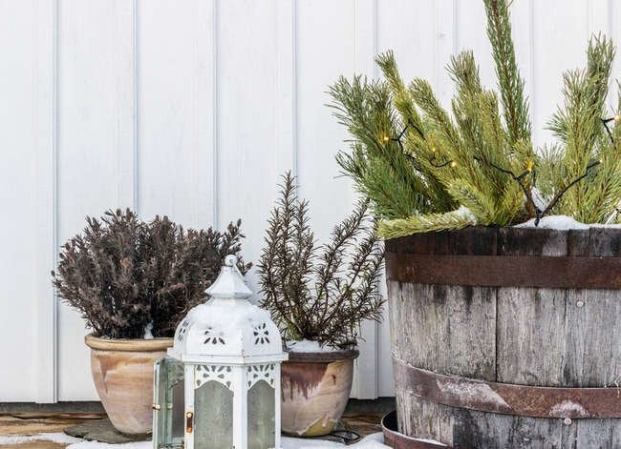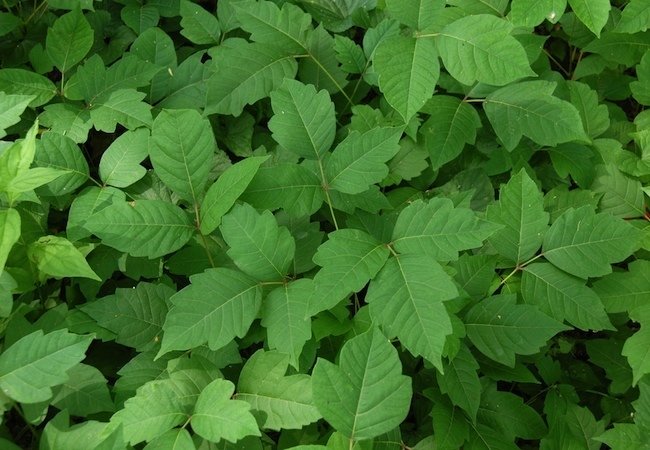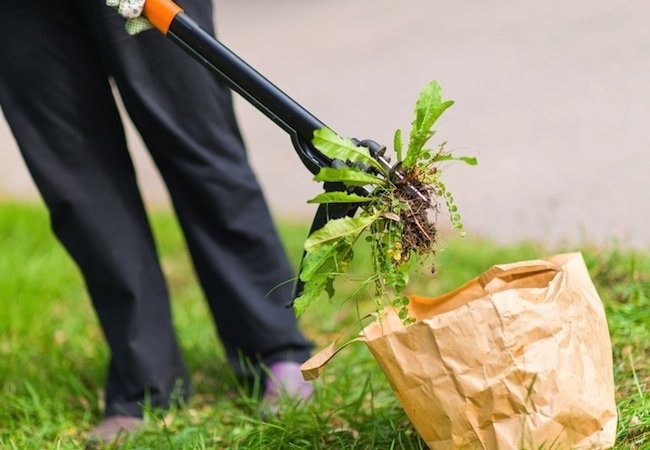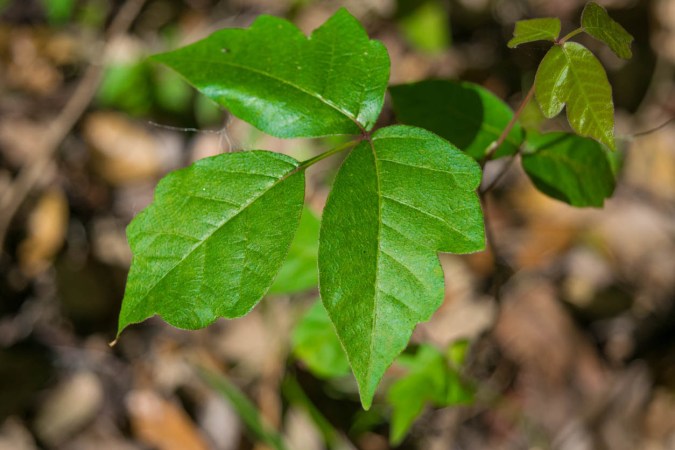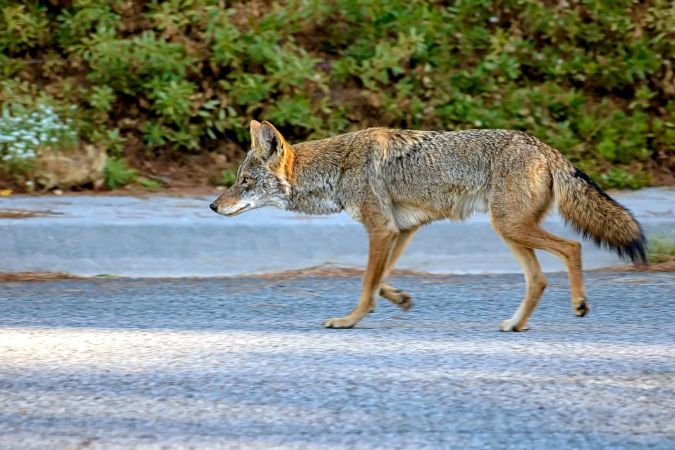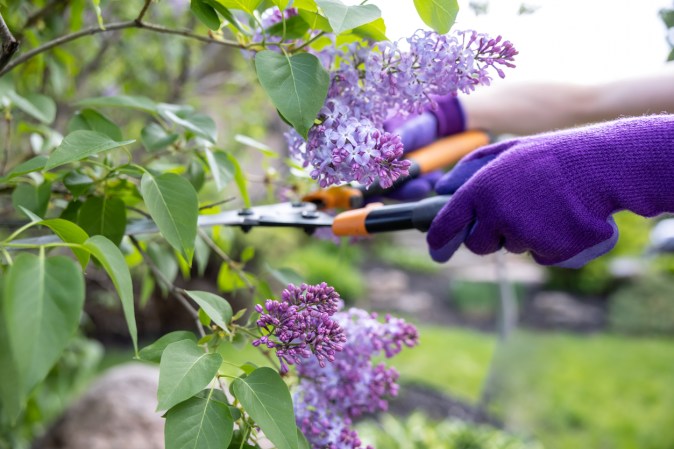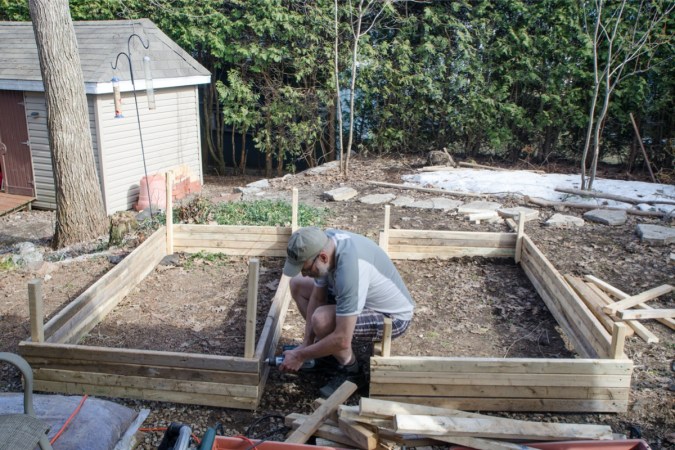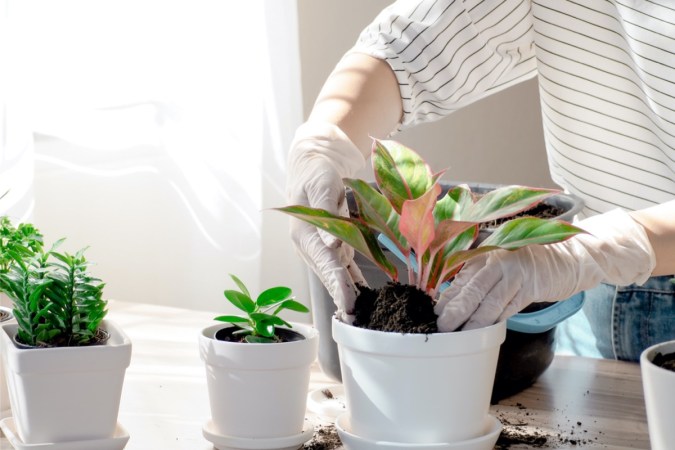We may earn revenue from the products available on this page and participate in affiliate programs. Learn More ›
Japanese knotweed, a perennial plant known for its unrelenting growth, difficult eradication and its nickname (the “Godzilla” weed), is a non-native plant to the United States that can crowd other plants, choke out their roots, and shade their sunlight. As such, Japanese knotweed has received a bad reputation among gardeners. Here are some tips for how homeowners can handle Japanese knotweed removal, but they may require professional intervention since the plant is so pervasive.
Time required: Several hours with excavation, but chemical treatments can take up to 5 years to altogether remove the plant
Difficulty: Intermediate to expert
Estimated cost: Varies depending on tools and brand of glyphosate concentrate
Tools & Materials
Bobvila.com may earn a commission from purchases made through these links.
- Rocks, cinder blocks, or other heavy objects
- Plastic garbage bags
- Herbicide containing glyphosate concentrate
Before You Begin…
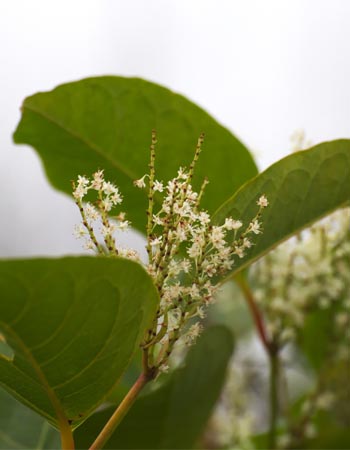
Identifying Japanese knotweed early in its development may help homeowners control this invasive plant. When young, Japanese knotweed almost looks like asparagus with red bamboo-like shoots, which later become hollow stems. Its flowers will grow from August to September.
Also important to note is the controversy around glyphosate concentrate. While some researchers claim that it is carcinogenic, the Environmental Protection Agency and the World Health Organization have conducted research and found that it is unlikely to be carcinogenic to humans. However, care should be taken when using this chemical.
Tips for Removing Japanese Knotweed
- Have patience and persevere with combined methods of eradication to rid a yard of Japanese knotweed for good.
- Japanese knotweed thrives on sunlight, so the less it can have, the easier it is to kill.
Safety Considerations
- If choosing to use an herbicide like glyphosate concentrate, be sure to read and follow all instructions. It’s also recommended to wear long pants, shirts, closed-toed shoes, and gloves.
- Choose heavy materials that can hold down the tarp and ensure pets or young children won’t be able to crawl under it.
STEP 1: Identify the Japanese knotweed.
Before pulling out weed killer or pruning shears (or your phone to call a landscaper), ensure the invasive plant in the yard is, in fact, Japanese knotweed. Japanese knotweed is trickier than other weeds, so Googling “how to kill weeds in the lawn” won’t be of much help.
Japanese knotweed is perennial, meaning it dies in the winter to come back in the spring, and it prefers sunny and moist areas like gardens, lawns, and riverbanks. It can grow up to 10 feet long with roots up to 20 feet deep. This plant tends to grow in clumps and has heart-shaped leaves larger than the average adult hand. Its stems have “knots” every few inches, hence the name “knotweed.” The Japanese knotweed’s flower is cream-colored, can bloom between 6 and 8 inches tall, and grows straight up.
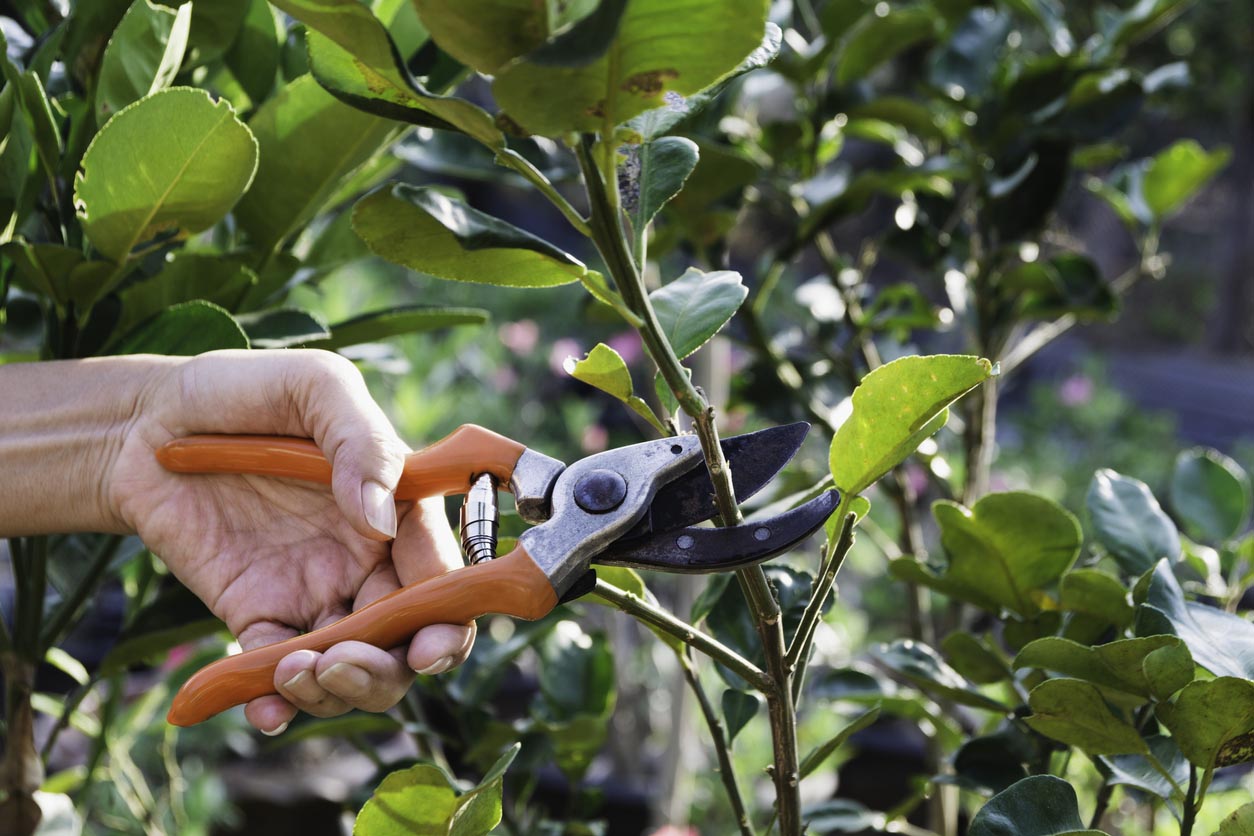
STEP 2: Determine the eradication method depending on the time of year.
Depending on the time of year, there are eradication methods best suited for the Japanese knotweed’s growth season. The plant does grow aggressively, so periodic yard work, including pruning, shearing, and excavating, is needed to maintain and minimize the plant’s growth.
It’s recommended to use more than one eradication method to increase the effectiveness of the techniques for removing Japanese knotweed. If you’re unsure of your time or ability to address this invasive weed, it’s best to call a professional.
STEP 3: Smother knotweed in the spring.
Spring is the beginning of the Japanese knotweed’s growth season, so smothering it with a tarp and keeping it tamped down with heavy rocks can ultimately kill the plant. To smother Japanese knotweed, cut all the tall stems as close to the ground as possible. Then, remove debris from the area the knotweed grows in. After the stems have been cut down as far as possible and cleared away, place tarps over the area. Overlap the tarps to prevent the sharp stem edges from puncturing and letting sunlight in. Japanese knotweed thrives on sunlight, so the darker the environment, the better.
Hold down the tarps with rocks, cinder blocks, or other heavy material, so the overlapped tarps don’t blow away or move. New stem growth may happen and push the tarp up, but walking over the tarp can trample the new growth. As it doesn’t have sunlight, it won’t be able to survive.
Leave the tarps in place until you or a landscape expert is confident the plant under has withered and died. Smothering is one of the best ways to get rid of Japanese knotweed but could take the longest, so combining it with other methods may speed up the process.
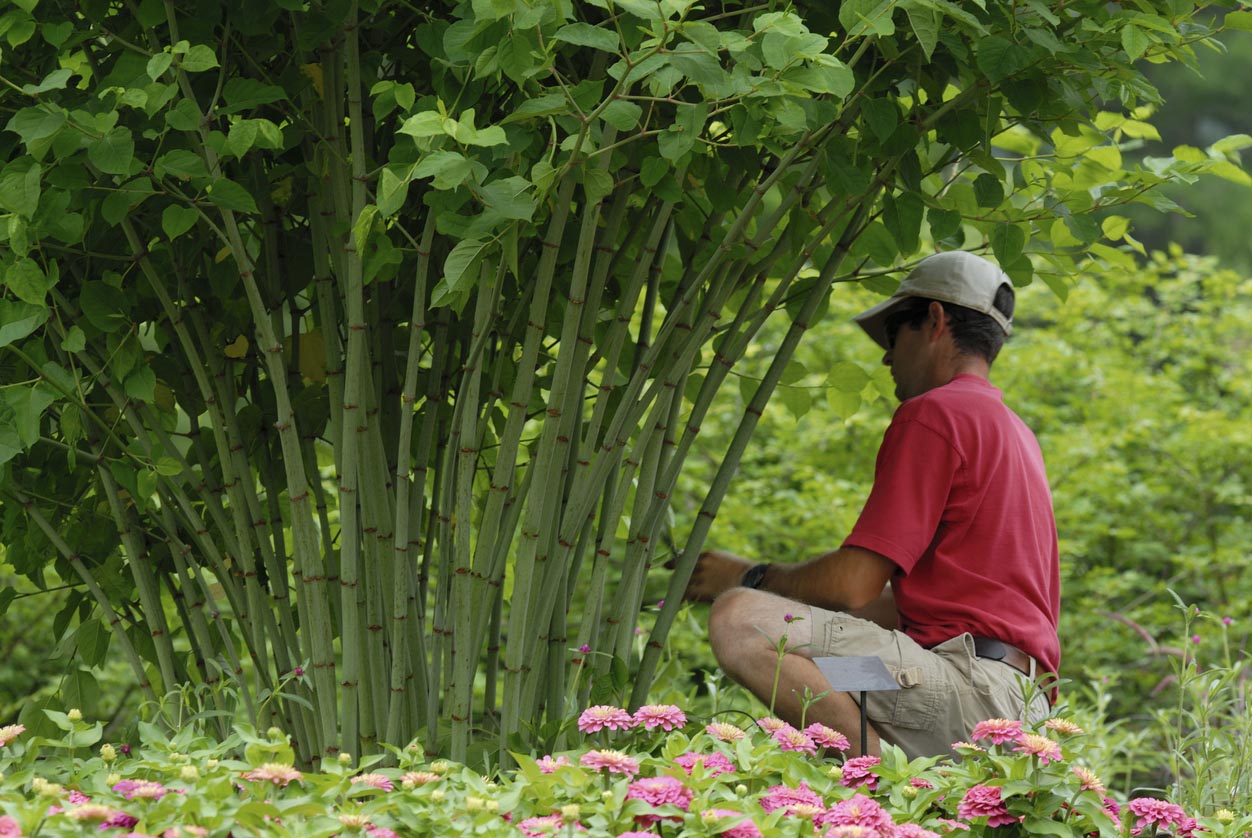
STEP 4: Cut down Japanese knotweed during the summer.
Surprisingly, Japanese knotweed can only be suppressed, not entirely eradicated, by cutting the plant back. For complete eradication, this method must be used with others.
Cut the plant’s stems down to the ground, so it cannot photosynthesize efficiently in the warm summer sun. It’s essential to gather every stem or leaf sheared, as they can easily root and grow in the soil if left to do so. Bag up the debris and keep an eye on the knotweed the rest of the summer to cut any additional stems that emerge.
STEP 5: Dig out Japanese knotweed any time of year.
Regardless of the season, digging out the roots of Japanese knotweed can discourage new growth and help to eradicate the plant. This method, while mostly effective, can and should be used in combination with another.
To dig out Japanese knotweed, locate the rhizome (or underground stems that send up shoots) and dig it out of the ground. Be gentle when first finding the rhizome, as shredding it won’t help in eradicating the plant. As little as 0.2 grams of the knotweed plant left over can regrow the entire bush. Dig out as much as possible, bag it for disposal, and monitor the area for any regrowth.
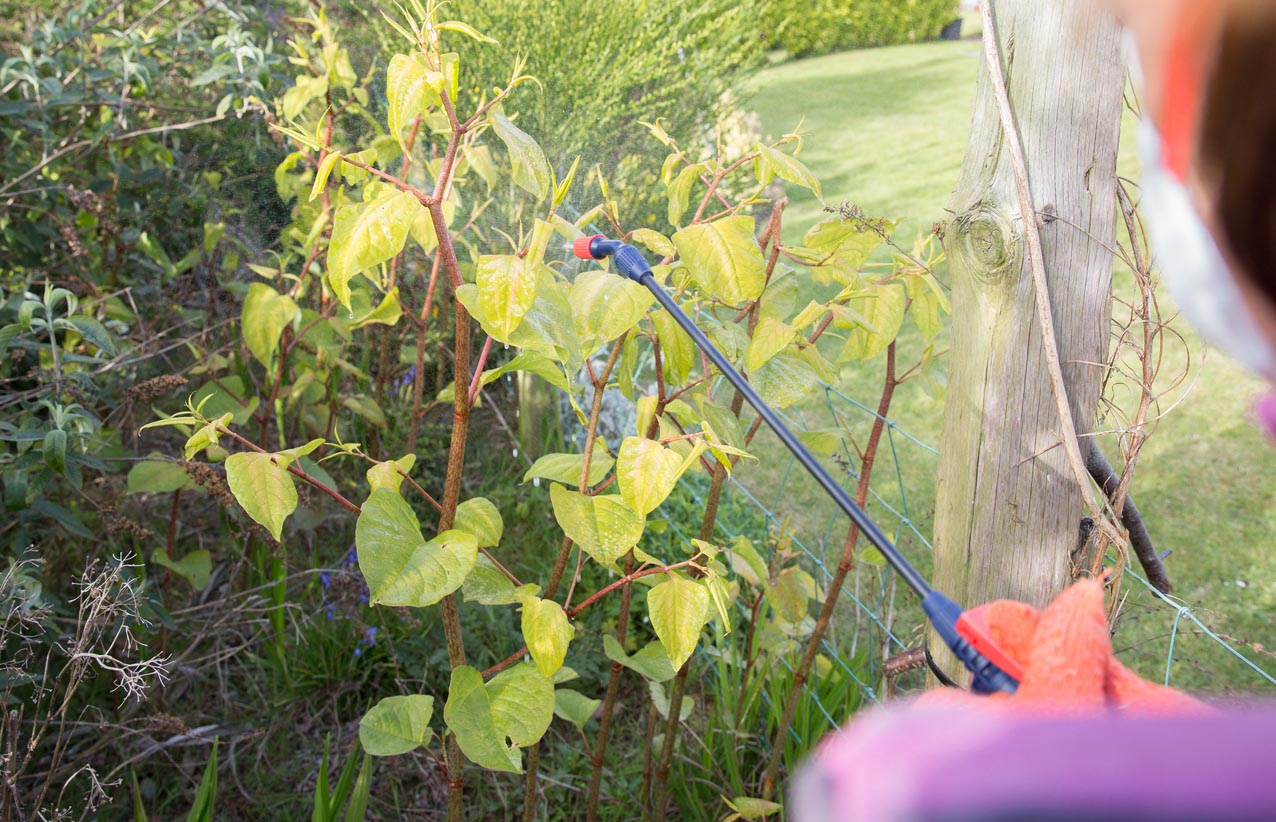
STEP 6: Apply herbicides like glyphosate concentrate in the summer and early fall when they’ll be most effective.
The final way some gardeners, landscapers, and homeowners choose to deal with Japanese knotweed is to rely on a chemical weed killer, including glyphosate concentrate. While these herbicides are advertised as non-toxic to humans and pets, it’s essential to read and follow the bottle’s directions carefully. Keep pets and young children away from the area for several hours (until the herbicide can soak into the plant or soil), and protect yourself with long clothes, gloves, and closed-toed shoes while using the herbicide.
STEP 7: Contact a professional for effective Japanese knotweed removal.
Unsure of how to perform the above suggestions or feel uncomfortable attempting them? It’s best to call a professional to remove the Japanese knotweed. Professionals take the guesswork out of the equation and identify, treat, and remove the affected area without the strain or stress an inexperienced homeowner might encounter.
Japanese knotweed can be particularly tricky to rid a lawn or garden of, but it’s not impossible. With patience, perseverance, and perhaps a professional to ensure the invasive plant is entirely dead, homeowners can reclaim their outdoor spaces for their plants.
